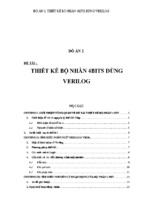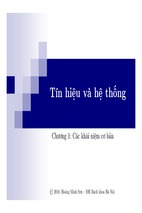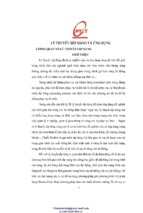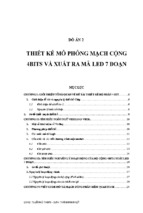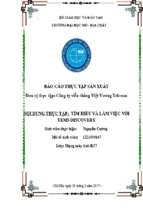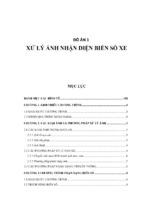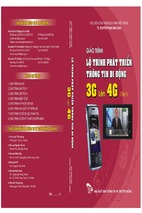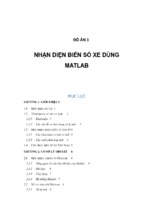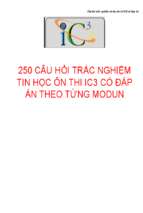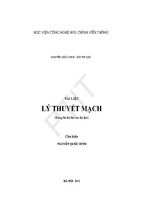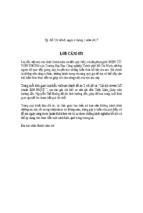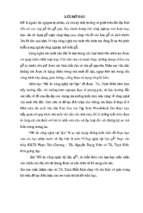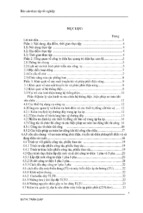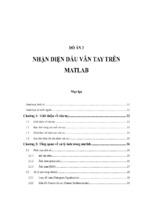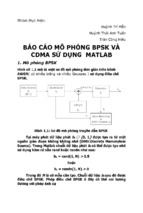262001
Mobile & Wireless Networking
Lecture 7:
Wireless LAN
[Schiller, Section 7.3]
[Reader, Part 6]
[Optional: "IEEE 802.11n Development: History, Process, and Technology",
Perahia, IEEE Communications Magazine, July 2008]
Geert Heijenk
Mobile and Wireless Networking
2009 / 2010
Outline of Lecture 7
Wireless LAN
General Characteristics / IEEE 802.11 standard
IEEE 802.11 Physical Layers
Medium Access Control
CSMA/CA
CSMA with RTS/CTS
MAC Quality of Service Enhancements
MAC Frame Format
MAC Management
IEEE 802.11: Important Developments
2
Mobile and Wireless Networking
2009 / 2010
Design goals for wireless LANs
global, seamless operation
low power for battery use
no special permissions or licenses needed to use the LAN
robust transmission technology
simplified spontaneous cooperation at meetings
easy to use for everyone, simple management
protection of investment in wired networks
security (no one should be able to read my data), privacy (no
one should be able to collect user profiles), safety (low radiation)
transparency concerning applications and higher layer
protocols, but also location awareness if necessary
3
Mobile and Wireless Networking
2009 / 2010
Comparison: infrastructure vs. ad-hoc networks
infrastructure
network
AP: Access Point
AP
AP
wired network
AP
ad-hoc network
4
Mobile and Wireless Networking
2009 / 2010
IEEE 802.11 - Architecture of an infrastructure network
Station (STA)
802.11 LAN
STA1
802.x LAN
Basic Service Set (BSS)
BSS1
Portal
Access
Point
Access
Point
ESS
group of stations using the same
radio frequency
Access Point
Distribution System
station integrated into the wireless
LAN and the distribution system
Portal
BSS2
bridge to other (wired) networks
Distribution System
STA2
terminal with access mechanisms
to the wireless medium and radio
contact to the access point
802.11 LAN
STA3
interconnection network to form
one logical network (ESS:
Extended Service Set) based
on several BSS
5
Mobile and Wireless Networking
2009 / 2010
IEEE 802.11 - Architecture of an ad-hoc network
Direct communication within a
limited range
802.11 LAN
STA1
STA3
IBSS1
STA2
Station (STA):
terminal with access
mechanisms to the wireless
medium
Independent Basic Service Set
(IBSS):
group of stations using the
same radio frequency
IBSS2
STA5
STA4
802.11 LAN
6
Mobile and Wireless Networking
2009 / 2010
IEEE standard 802.11
fixed
terminal
mobile terminal
infrastructure
network
access point
application
application
TCP
TCP
IP
IP
LLC
LLC
LLC
802.11 MAC
802.11 MAC
802.3 MAC
802.3 MAC
802.11 PHY
802.11 PHY
802.3 PHY
802.3 PHY
7
Mobile and Wireless Networking
2009 / 2010
IEEE 802.11 - Layers and functions
PLCP Physical Layer Convergence Protocol
MAC
access mechanisms,
fragmentation, encryption
MAC Management
synchronization, roaming,
authentication, MIB, power
management
clear channel assessment
signal (carrier sense)
PMD Physical Medium Dependent
modulation, coding
PHY Management
channel selection, MIB
Station Management
LLC
MAC
MAC Management
PLCP
PHY Management
PMD
coordination of all management
functions
Station Management
PHY
DLC
8
Mobile and Wireless Networking
2009 / 2010
The Physical Layer
IEEE 802.11
Direct Sequence Spread Spectrum (DSSS) PHY
– 2.4 GHz : RF : 1 – 2 Mbps
Frequency Hopping Spread Spectrum (FHSS) PHY
– 2.4 GHz : RF : 1- 2 Mbps
Infrared (IR) PHY
– Indoor : IR : 1 and 2 Mbps
IEEE 802.11b
High Rate DSSS PHY
– 2.4 GHz : 5.5 Mbps – 11 Mbps
IEEE 802.11a
OFDM PHY
– 5 GHz : 6-54 Mbps
IEEE 802.11g
OFDM PHY
– 2.4 GHz : 6-54 Mbps
IEEE 802.11n
OFDM PHY + MIMO (up to 4x4) + 40 MHz channel (instead of 20 MHz)
– Extension of a/g: 6.5 – 600 Mbps
Mobile and Wireless Networking
2009 / 2010
WLAN: IEEE 802.11a
Data rate
6, 9, 12, 18, 24, 36, 48, 54 Mbit/s, depending on SNR
User throughput (1500 byte packets): 5.3 (6), 18 (24), 24 (36), 32 (54)
6, 12, 24 Mbit/s mandatory
Transmission range
100m outdoor, 10m indoor
E.g., 54 Mbit/s up to 5 m, 48 up to 12 m, 36 up to 25 m, 24 up to 30m, 18 up to 40
m, 12 up to 60 m
Frequency
Free 5 GHz ISM-band
Special Advantages/Disadvantages
Advantage: fits into 802.x standards, free ISM-band, available, simple
system, uses less crowded 5 GHz band
Disadvantage: stronger shading due to higher frequency
10
Mobile and Wireless Networking
2009 / 2010
WLAN: IEEE 802.11g
Frequency
Free 2.4 GHz ISM-band
But shared with many legacy WLANs and other systems, e.g. Bluetooth
Backward compatible with IEEE 802.11b
Data rate (as 802.11a)
6, 9, 12, 18, 24, 36, 48, 54 Mbit/s, depending on SNR
User throughput significantly lower in presence of 802.11b stations
Transmission range
Somewhat higher than 802.11a
Special Advantages/Disadvantages
Advantage: backward compatibility, better propagation conditions
Disadvantage: crowded band, lower speed due to backward compatibility
11
Mobile and Wireless Networking
2009 / 2010
802.11 b/g Channel selection (non-overlapping)
Europe (ETSI)
channel 1
2400
2412
channel 7
channel 13
2442
2472
22 MHz
2483.5
[MHz]
US (FCC)/Canada (IC)
channel 1
2400
2412
channel 6
channel 11
2437
2462
22 MHz
2483.5
[MHz]
12
Mobile and Wireless Networking
2009 / 2010
IEEE 802.11a/g – PHY frame format
4
1
12
1
rate reserved length parity
6
16
tail service
variable
6
variable
payload
tail
pad
bits
PLCP header
PLCP preamble
12
signal
data
1
6 Mbit/s
variable
symbols
6, 9, 12, 18, 24, 36, 48, 54 Mbit/s
13
Mobile and Wireless Networking
2009 / 2010
802.11 - MAC services
MAC services
Asynchronous Data Service
Time-bounded Service
Contention
Contention-Free
Distributed Coordination Function (DCF)
Point Coordination Function (PCF)
CSMA/CA
Polling
Ad-hoc and Infra-structure mode
Infra-structure mode only
optional
mandatory
14
Mobile and Wireless Networking
2009 / 2010
802.11 - MAC layer I
Access methods
DCF CSMA/CA (mandatory)
DCF w/ RTS/CTS (optional)
access point polls terminals according to a list
HCF EDCA (optional)
avoids hidden terminal problem
PCF (optional)
collision avoidance via randomized „back-off“ mechanism
minimum distance between consecutive packets
ACK packet for acknowledgements (not for broadcast)
CSMA/CA with priority levels
HCF CCA (optional)
Improved polling
15
Mobile and Wireless Networking
2009 / 2010
802.11 - MAC layer II
Priorities
defined through different inter frame spaces
no guaranteed, hard priorities
SIFS (Short Inter Frame Spacing)
PIFS (PCF IFS)
highest priority, for ACK, CTS, polling response
medium priority, for time-bounded service using PCF
DIFS (DCF, Distributed Coordination Function IFS)
lowest priority, for asynchronous data service
DIFS
medium busy
DIFS
PIFS
SIFS
contention
direct access if
medium is free ≥ DIFS
next frame
t
16
Mobile and Wireless Networking
2009 / 2010
802.11 - CSMA/CA access method I
DIFS
DIFS
medium busy
direct access if
medium is free ≥ DIFS
contention window
(randomized back-off
mechanism)
next frame
t
slot time
station ready to send starts sensing the medium (Carrier Sense
based on CCA, Clear Channel Assessment)
if the medium is free for the duration of an Inter-Frame Space (IFS),
the station can start sending (IFS depends on service type)
if the medium is busy, the station has to wait for a free IFS, then the
station must additionally wait a random back-off time (collision
avoidance, multiple of slot-time)
if another station occupies the medium during the back-off time of
the station, the back-off timer stops (fairness)
17
Mobile and Wireless Networking
2009 / 2010
802.11 - competing stations - simple version
DIFS
DIFS
station1
station2
DIFS
boe
bor
boe
busy
DIFS
boe bor
boe
busy
boe busy
boe bor
boe
boe
busy
station3
station4
boe bor
station5
busy
bor
t
busy
medium not idle (frame, ack etc.)
boe elapsed backoff time
packet arrival at MAC
bor residual backoff time
18
Mobile and Wireless Networking
2009 / 2010
802.11 - Binary Exponential Backoff
Stations choose their backoff time randomly from contention
window
Ideal contention window size is trade-of between acceptable load
and experienced delay
Initial contention window size (CWmin) is 7 slots
(backoff time between 0 and 7)
After collision (no ack), contention window is “doubled” until CWmax
= 255 is reached:
7 -> 15 -> 31 -> 63 -> 127 -> 255
19
Mobile and Wireless Networking
2009 / 2010
802.11 - CSMA/CA access method II
Sending unicast packets
station has to wait for DIFS before sending data
receivers acknowledge at once (after waiting for SIFS) if the packet
was received correctly (CRC)
automatic retransmission of data packets in case of transmission
errors
DIFS
sender
data
SIFS
receiver
ACK
DIFS
other
stations
waiting time
data
t
contention
20
Mobile and Wireless Networking
2009 / 2010
- Xem thêm -

